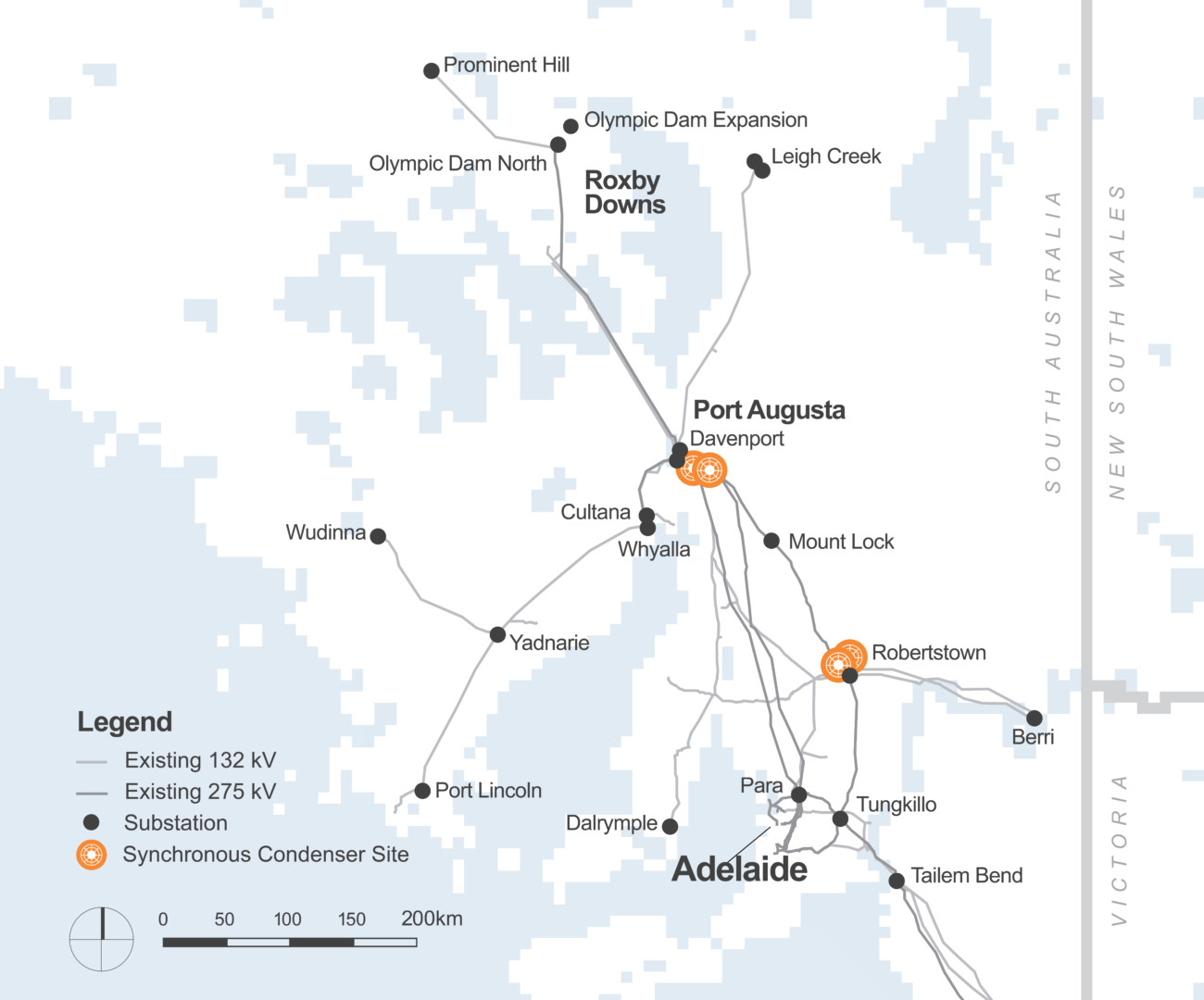Power System Strength (Synchronous Condensers)
Strengthening South Australia’s power system
South Australia has become a world leader in renewable energy generation. This means that traditional synchronous generation sources, such as gas-fired units, now operate less often.
As more of these energy sources such as wind and solar are connected to the grid, traditional power generation sources such as gas-fired units, operate less often. This has created a shortfall in system strength which was declared by the Australian Energy Market Operator (AEMO) on 13 October 2017 and a shortfall in inertia which was declared on 24 December 2018.
A secure power system needs adequate levels of system strength and inertia, which to date have been provided by traditional synchronous generators.
System strength relates to the ability of a power system to manage minor fluctuations in supply or demand while maintaining stable voltage levels, ensuring stable and secure supply for customers.
Inertia relates to the ability of a power system to manage fluctuations in supply or demand while maintaining stable system frequency. It is mostly provided by large rotating electrical machines that help to maintain the frequency of the power system.
Both are important to ensure a secure power supply for customers. A lack of system strength or inertia on the power system brings with it an increased risk of system instability and supply interruptions.
ElectraNet investigated options to respond to these needs to ensure customers have a reliable and secure power system. Options included entering into contracts with generators or installing synchronous condensers.
Following an analysis of these options, the installation of synchronous condensers on the network was determined to be the most efficient and least cost option to ensure there is adequate system strength and inertia.
A synchronous condenser operates in a similar way to large electric motors and generators. It contains a synchronous motor whose shaft is not directly connected to anything but spins freely and is able to adjust technical conditions on the power system.
Synchronous condensers are estimated to deliver a net saving to customers equivalent to $3 to $5 per year on a typical South Australian residential electricity bill from the time of commissioning, as it avoids the increasing costs being incurred by AEMO in directing and compensating existing gas fired generators to manage the gap.
On 18 February 2019, ElectraNet was advised by the Australian Energy Regulator (AER) that it had determined ElectraNet had performed an economic assessment that was equivalent to the Regulatory Investment Test for Transmission (RIT-T). The AER also determined that the high inertia synchronous condenser solution identified by ElectraNet in its Economic Evaluation Report reasonably satisfied the economic evaluation requirement, thereby providing regulatory approval for the proposed synchronous condenser solution.
You can read the full report here: System Strength Economic Evaluation Report.
On 8 March 2019, our solution received technical approval from AEMO.
On 20 August 2019, the AER approved $166 million to fund the capital cost of delivering the synchronous condenser solution. This was the final regulatory approval required for the project.
You can read the AER’s final approval here.
Synchronous condenser locations

Project completion
In October 2021 ElectraNet announced that the installation of all four synchronous condensers had been completed.
To read the media release click here.

